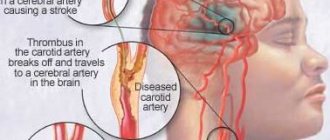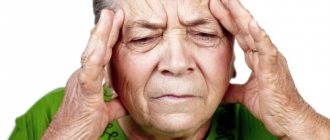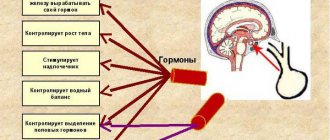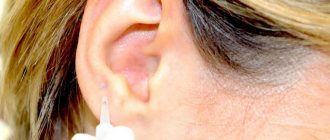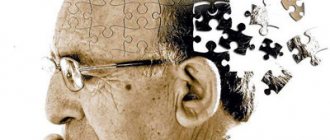How do you know if you have Parkinson's disease? You just need to record 30 seconds of your conversation and provide the program with the audio for analysis. The test accuracy is 99%.
0:11 I do applied mathematics, and the problem for everyone who does applied mathematics is that as management consultants, no one knows what we actually do. So now I will try to explain to you what I do.
0:25 Dancing is an activity peculiar to few species and, in particular, to humans. We admire the virtuosity of ballet dancers and tap dancers, you will see them now. Ballet requires exceptional skill, a high level of proficiency, and perhaps a certain level of inherent fitness, which may well be genetically determined. Unfortunately, neurological diseases, such as Parkinson's disease, gradually destroy this amazing ability, as happens with my friend Ian Stripling, who was once a virtuoso ballet dancer. Over the years, significant progress has been made in the treatment of this disease. However, today it affects 6.3 million people in the world. All of them are forced to live with incurable weakness, tremors, rigidity and other symptoms that accompany Parkinson's disease. Therefore, objective tools are needed to detect this disease as early as possible. We need to be able to objectively assess the course of the disease, because the only way we can know that the treatment is really helping is when we have an objective indicator that gives an accurate answer.
1:25 Annoyingly, there are no biomarkers for Parkinson's disease and other movement disorders, meaning you can't just get your blood tested, and the best available method is a 20-minute neurological exam. To do this, you need to come to the clinic, plus it is very expensive, so it is not feasible outside of participation in clinical trials. It's simply not feasible.
1:44 What if patients could do this test at home? They will not need to travel to the clinic. If patients can do this test themselves, there will be no need to involve highly paid specialists. By the way, a neurological examination costs approximately $300.
1:59 I want to offer an unconventional approach to solving this problem. The fact is that we are all virtuosos in a certain sense, like my friend Ian Stripling.
2:08 Now you see how the vocal cords vibrate when a person talks, and that person is healthy. We can all consider ourselves vocal virtuosos, because in order to pronounce sounds we must coordinate the work of all speech organs, and there are even special genes for this, for example, FoxP2. Just like ballet, it requires the highest level of training. Remember how long it takes a child to learn to speak. By sound, we can determine the position of the vocal cords as they vibrate. In Parkinson's disease, not only the limbs are affected, but also the speech organs. The bottom line is an example of abnormal vocal cord vibration. We see the same symptoms - trembling, weakness and rigidity. Speech becomes quieter, breathy and delayed, and this is one of the typical symptoms of the disease.
2:53 Signs of vocal cord changes may be subtle, but if we use a regular digital microphone and a sensitive computer voice analysis program, and the latest advances in computer self-learning, which have now greatly improved, we can accurately determine what stage of the disease a person is at by just his voice.
3:14 How does such a test based on voice analysis compare with a clinical test performed by a specialist? Both of these tests are non-invasive and use existing infrastructure. There is no need to build new clinics to carry them out. And both of them are reliable. However, a test based on voice analysis can be performed by a non-specialist. This means that it can be carried out independently. This test is very fast and takes a maximum of 30 seconds. It's very inexpensive and we know what it will lead to. When something becomes cheap, it becomes mass produced. Here are some amazing goals we can now set. We can reduce the number of clinic visits for patients. They will not need to come for a routine examination. We can carry out frequent monitoring and obtain objective results. We can conduct low-cost clinical trials with large numbers of participants, and for the first time in history we can study the entire population. We have the opportunity to begin searching for early biomarkers of the disease so that we can begin treatment at the very beginning.
4:07 Today we are taking the first steps in this direction and launching the “Voice of Parkinson’s Disease” program. Together with Aculab and PatientsLikeMe, we want to record the voices of a large number of people around the world in order to collect enough data to begin to achieve these four goals. We have local phone numbers available to 750 million people. Every person, healthy or suffering from Parkinson's disease, can call and leave a recording of their voice. The call costs only a few cents. And I'm very happy to report that we have already reached 6% of our target in just 8 hours. Thank you. (Applause). (Applause).
In what order does it appear?
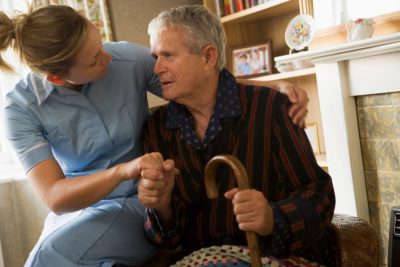
In the early stages, it is almost impossible to diagnose the disease, because people often confuse the characteristic symptoms with ordinary fatigue and do not seek help from a specialist. This mistake can be fatal.
Parkinson's disease is common among older people, but can also occur among young people and even children.
But in younger years, the disease is more easily tolerated, it progresses slowly and does not cause any special problems for a person, allowing him to live at his usual pace.
In old age, the disease begins to catch up. It is actively developing, affecting the entire central nervous system. This occurs due to the rapid death of neurons.
Let's take a closer look at the symptoms and stages of the disease:
- Stage 1 does not have pronounced symptoms. But if you are more careful, you may notice slight disruptions in the functioning of the musculoskeletal system, a constant feeling of fatigue, insomnia, and depression.
- Stage 2 is characterized by mild tremors of the hands, jaw, tongue, stiffness of the neck and lower spine. Speech slows down, facial expressions are lost, the functioning of the sebaceous glands is disrupted, and sweating clearly increases.
- At stage 3, muscle rigidity appears, the gait becomes like a doll's - in small steps with parallel feet. Head tremor is observed. The “petitioner pose” is characteristic - the torso leans forward, the back is stooped, legs and arms are bent. Speech becomes slurred.
- At stage 4, postural instability (loss of balance) appears.
- Stage 5 – all motor processes are disrupted. The person cannot move independently or even sit. The patient needs constant care.
What early symptoms of Parkinson's disease should you pay attention to?
Trembling in fingers, hands, chin
Tremor is one of the most obvious and common symptoms of Parkinson's disease. In the later stages of the disease, a person cannot even eat on his own: his hands tremble with such force that he does not allow him to bring a spoon or cup to his mouth. But even at the very beginning, the slightest twitching of the fingers, hands, and chin can also be noticeable.
In principle, trembling of the limbs can be explained by other reasons. Perhaps you're just tired. Or they got nervous. Or, for example, you have hyperthyroidism - an excess of thyroid hormones that causes the body to be constantly on edge. You can easily check who is to blame.
Trembling in Parkinson's disease is specific. It is called resting tremor. This means that one or another part of the body trembles when it is in a relaxed state. But as soon as you start making conscious movements with it, the twitching stops.
If this is your case and rest tremor occurs regularly, hurry up and see a doctor.
Shrinking handwriting
The letters are becoming smaller, the spaces between them are getting closer, the words are crowded together... This change in handwriting is called micrography Handwriting Analysis in Parkinson's Disease: Current Status and Future Directions and indicates disturbances in the functioning of the central nervous system. Often micrographia is associated specifically with the development of Parkinson's disease.
How to diagnose manifestations
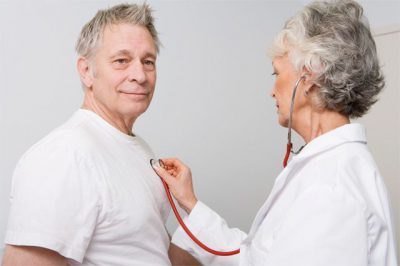
Diagnosing Parkinson's disease is not easy.
This disease is often confused with neurological or mental disorders, because their symptoms are very similar.
But after undergoing a series of examinations and tests, it is possible to achieve the correct diagnosis.
If you are concerned about characteristic symptoms, your doctor is a neurologist. He, based on the patient’s stories and with the help of a full examination, will make a diagnosis, determine the stage of the disease and prescribe a course of therapy.
During a conversation with the patient, the doctor learns about the following signs:
- Emotional stability. Irritability is often observed with the disease.
- Physical and moral condition . The patient often feels tired for no particular reason.
- Asks questions regarding night behavior. Patients often have nightmares, have problems sleeping, profuse salivation at night, and men have problems with erection.
- Excessive sweating.
- Parkinson's disease causes a deteriorating sense of smell and pain in the shoulder blades and shoulders.
During the examination, the doctor carefully looks at the patient, notices little things in his behavior, and pays attention to his speech.
About diagnosing Parkinson's disease in this video:
Analyzes
After a thorough examination, the doctor prescribes tests. A blood test from a vein will show the level of thyroid hormone and protein.
Laboratory diagnostics
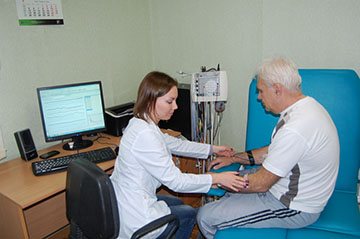
To date, there are no specific laboratory studies that can in any way confirm Parkinson's disease.
Tests that can indirectly detect early changes in Parkinson's include the University of Pennsylvania Olfactory Identification Test, which is used to study olfactory dysfunction in patients.
Science does not stand still, and new therapy methods are constantly being developed. New in the treatment of Parkinson's disease - what has modern medicine achieved?
Effective treatments for Parkinson's disease are described here. Traditional therapy with decoctions, infusions and external remedies.
It is always easier to prevent a disease than to treat it for a long time. The link lists tips for preventing Parkinson's disease.
How to determine the diagnosis yourself
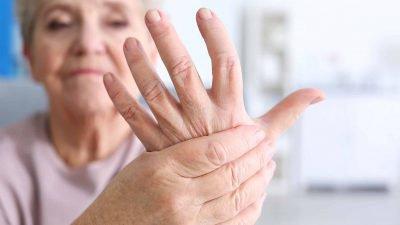
Parkinson's disease can be self-diagnosed.
To do this, just listen carefully to your body and pay attention to any little things.
Knowing the characteristic symptoms of the disease, a person is able to notice them. But doing this is extremely difficult. Therefore, it is better to avoid amateur activities and go to the doctor.
Is it true that Parkinson's disease can be diagnosed by smell? Today in the UK, research is being conducted to identify the disease by smell.
Scientists were inspired to carry out such experiments by the Englishwoman Joy Milne, who, with the help of aromas, accurately identifies Parkinson’s disease.
So:
- At the first signs of the disease, you should immediately consult a doctor rather than diagnose yourself.
- Parkinson's disease is diagnosed by a neurologist who examines and talks with the patient, prescribes tests, conducts special tests, and sends for examinations.
- The most reliable method for detecting the disease in the early stages is MRI.
Parkinson's disease is a terrible diagnosis. But, if it is detected in time, there is a chance to stop the development of the disease and maintain a person’s usual way of life.
About the method of early diagnosis of pathology in this video:
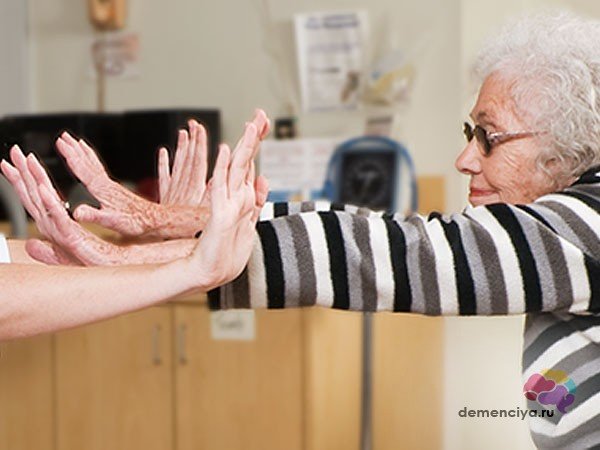
Parkinson's disease is characterized by slowly progressive neurological and cognitive impairment. The problem of diagnosing the disease lies in the careless attitude of relatives and doctors to the first symptoms. Typical signs of damage to the nervous system are regarded as a manifestation of natural aging of the body. The disease can be suspected in the early stages using tests and questionnaires to assess the neurological and psychological status. Many of them are simple and do not require much effort or time, so close relatives can independently test for Parkinson's disease at home.

Video
123
If you speak softly, have trouble sleeping and complain of dizziness, you should definitely get checked.
Parkinson's disease affects approximately every hundredth person over 60 years of age Epidemiology of Parkinson's disease. When it occurs, cells die in the area of the brain that is responsible for motor functions, motivation, and learning. “Shaking palsy” (as parkinsonism was previously called because of the characteristic trembling of the arms, legs, and chin) affects not only the body, but also the mind. And, unfortunately, it is incurable.
But if the disease is recognized at an early stage, its development can be slowed down. Here are the 10 Early Signs of Parkinson's Disease symptoms that should alert you. Even two or three of them are enough to urgently consult a therapist or neurologist.
Memory tests
The simplest method for identifying memory impairment is the “5 words” test. The patient is given a sheet of paper on which 5 simple words from everyday vocabulary are written. After reading, the test taker must reproduce them. Then the patient is distracted by a conversation for 3-4 minutes and again asked to repeat the previously read words. If it is impossible to reproduce them immediately after reading, they speak of severe memory impairment, in other cases - of mild or moderate degree.

Another way to assess memory and memorization ability is a questionnaire test. The method is less informative because the testing does not exclude a subjective factor (a person may provide unreliable information). This test is suitable not only for the patient with Parkinson's disease, but also for his close relatives. Memory impairment is indicated when the answer is positive two or more times. The Parkinson's test consists of the following questions:
- Over the last month, have you forgotten to turn off the gas, iron or water?
- Have you lost things in the last month? If yes, how many times?
- Have you ever thought that a close relative looks completely different and you don’t recognize him?
- Do you have difficulty remembering a phone number or a date?
- Do you feel confused in a previously familiar area or area?
Another simple method for identifying the disease and concomitant mental disorders is the date recall test. The patient is asked to say when he or his immediate family was born. Long thinking, inability to answer a question, or ridiculous answers (for example, 03/45/1173) are an unfavorable sign.
Tests to assess attention and thinking
A quick way to identify disorders of thinking and intelligence are mathematical problems. The patient is asked to solve examples with simple arithmetic operations (addition, subtraction, multiplication). The second stage of testing is counting backwards with subtracting the number 7. The test taker must subtract 7 from a given number (usually 100 or 1000), then name the resulting difference. The arithmetic operation is performed at least three times.

Important! The inability to perform basic arithmetic operations is a sign of severe impairment of intelligence and thinking.
Another cognitive (thinking) test for Parkinson's can be done at home. To do this, the patient is told two words that are related in meaning (for example, cat and dog). The test taker must explain what the relationship is between these words. Not only is the absence of a solution considered incorrect, but also answers based on secondary features (for example, “a cat and a dog have a tail” or “an orange and a banana have a peel”).
An accessible method for identifying attention disorders is a digital test. During this procedure, the patient is told 5 numbers from the top ten at a rate of 1 number per second. The test taker must repeat the numbers in forward and reverse order. You can also use graphic cards to assess attention. 10 images are laid out in front of the patient and given 60 seconds to memorize. The test taker is then asked to turn away and one of the cards is removed. The patient must determine which image is missing.

Examination by a specialist
After the neurologist has collected an anamnesis and examined the complaints, diagnostic tests are performed. Such as the Westphal phenomenon, the Foix phenomenon, “cogwheel syndrome”, Romberg’s position.
Westphal phenomenon - after the doctor bends the patient’s foot, it does not return to its original position for a long time.
The Foix phenomenon - after bending the shin to the thigh, it does not fully unbend.
Romberg's pose - identifying imbalances by positioning the patient standing with feet together, eyes closed and arms extended forward.
Combined tests and questionnaires
In medicine, tests have been developed that allow one to identify several impaired mental functions at once. They consist of many tasks, each of which is responsible for memory, attention or thinking. The Mini-Cog test for Parkinson's disease has become widespread in clinical practice. At the beginning, the test taker is given 3 words that are not related to each other in meaning. The patient must then draw a clock face, place the numbers on it, and position the hands so that they show a specific time (for example, twenty minutes to four). After this, the test taker is asked to reproduce the words from the first task.
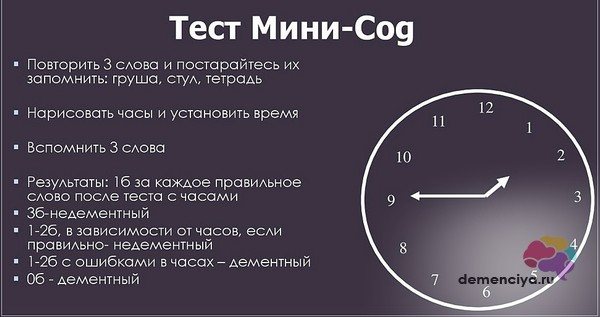
In clinical practice, another complex test is used - the Montreal Cognitive Function Assessment Questionnaire. It is used by psychiatrists to detect dementia due to Parkinson's disease. The test is considered difficult and requires 30-60 minutes to complete. It consists of several blocks and evaluates all higher brain functions of a person:
- abstract and spatial thinking;
- speed reaction;
- ability to remember and reproduce information;
- general level of intelligence;
- attention, its mobility and switchability;
- optical-spatial activity (the ability to determine the location, size, and distance of an object).
Important! The simplest and most informative method for identifying dementia in Parkinson's disease is the Mini-Cog test.
The test for Parkinson's disease consists of drawing a broken line, a three-dimensional object (cube, parallelepiped), or a clock dial with a given time. The questionnaire also contains arithmetic operations, reproduction of named words, naming numbers in reverse order, and simple logical tasks.
Tests to detect neurological disorders
Parkinson's disease is characterized not only by memory loss or cognitive-thinking dysfunction, but also by damage to the extrapyramidal system of the brain. It is responsible for movement, muscle tone and maintaining posture. Early signs of Parkinson's disease can be detected through simple neurological testing.
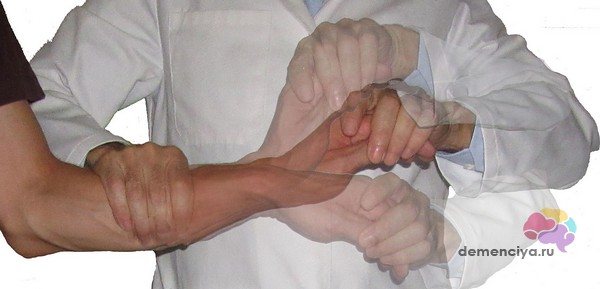
Neurological testing for Parkinson's disease
| Test | Norm | Parkinson's disease |
| Walking on level ground | Rhythmic steps at a speed of 80-100 per minute (for older people - at a pace that is comfortable for them), friendly hand movements while walking. When walking, the body is positioned vertically. | When walking, the center of gravity is shifted and the torso is tilted forward. The movement is carried out in small shuffling steps, the arms are chained to the body and immobilized. |
| Facial expression test with forehead frowning | 3-4 longitudinal folds on the forehead are clearly visible. | There are no facial wrinkles. |
| Graphics test | Individual handwriting, formed since childhood. | Distortion of handwriting due to trembling: slow and choppy writing of letters, small print (micrography). |
| Muscle tone test | Bending of the arm (the limb is bent not by the patient himself, but by another person) at the elbow joint occurs smoothly and without difficulty, then the limb acquires a physiological and comfortable position. | Bending the patient's arm requires effort and occurs intermittently, while the limb remains in a given position. |
Neurological disorders in parkinsonism appear earlier than cognitive-mental ones. Often the first symptom of the disease is tremor - shaking of the hands or nodding (like “yes-yes” or “no-no”) movements of the head. Tremors in Parkinson's can be distinguished from other neurological diseases in a simple way. Asking the patient to perform an action (for example, handing a glass or leafing through a book) will reduce the trembling. Weakening of tremor during movement is characteristic only of Parkinson's disease.

